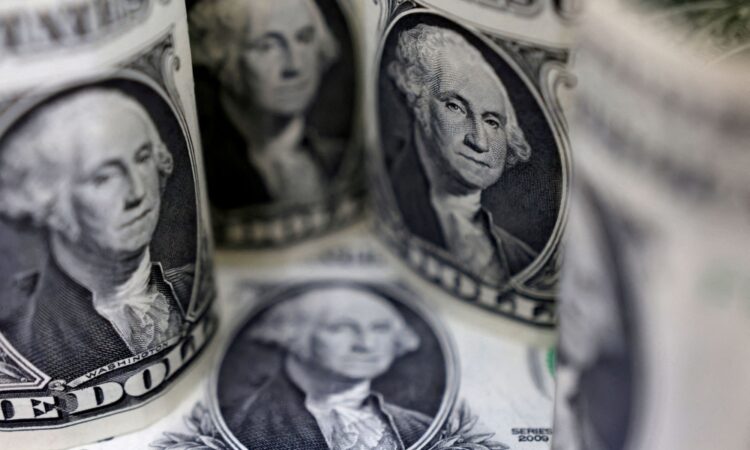
SINGAPORE, Feb 16 ― The dollar stalled today as investors showed a higher risk appetite on signs the overall global growth outlook is improving following a slew of strong US economic data, even as the Federal Reserve looks set to raise interest rates further.
Advertising
Advertising
Data from the US Commerce Department showed on Wednesday that retail sales in the United States rebounded sharply in January after two straight monthly declines, driven by purchases of motor vehicles and other goods.
That came just a day after US inflation figures showed consumer prices slowing, but still sticky. Data from earlier this month also showed that US job growth accelerated sharply in January, pointing to a still-tight labour market.
The greenback unwound some of its previous day’s gains today, though it still remained near a six-week high against a basket of currencies.
The New Zealand dollar rose 0.34 per cent to US$0.6302, but was not far off yesterday’s six-week low of US$0.6253 (RM2.77).
Similarly, the euro edged 0.15 per cent higher to US$1.0703, having fallen to its lowest in more than a month earlier in the week.
The US dollar index slipped 0.09 per cent to 103.71, after touching a six-week top of 104.11 in the previous session.
“The US economy continues to operate well. There’s very strong labour market data coming through, and the consumers are well supported,” said Jarrod Kerr, chief economist at Kiwibank. “We do think the Fed’s got a little bit more work to do.”
Markets are now expecting the Fed funds rate to peak above 5.2 per cent by July.
However, the resilience of the US economy has also brought about some cheer that the global growth outlook may not be as grim as initially expected, spurring some risk-on appetite.
“If we take a step back, the better-than-expected US data should support global growth picture. In addition, China’s reopening story has yet to fully play out and if data in the coming weeks starts to show a pick-up in activity, then this should bode well for global growth,” said Christopher Wong, a currency strategist at OCBC.
The Australian dollar was last 0.09 per cent higher at US$0.6913, having slid more than 0.5 per cent earlier in the session, after a surprising fall in Australia’s January employment figures.
Data released on Thursday showed that Australia employment fell for a second straight month in January while the jobless rate jumped to its highest since last May.
“The readings for January have really undershot market expectations,” said Carol Kong, a currency strategist at Commonwealth Bank of Australia.
“Overall, some weakness indicated by the report … probably caused markets to pare back some of the interest rate rises pencilled in for the RBA rate hikes.”
Sterling rose 0.1 per cent to US$1.2050, after slumping more than 1 per cent in the previous session.
British inflation slowed more than expected in January and there were signs of cooling price pressure in parts of the economy watched closely by the Bank of England (BoE), data released on Wednesday showed.
This added to signs that further hefty BoE interest rate hikes are unlikely.
The yen gained 0.2 per cent to 133.87 per dollar, with the focus on an upcoming speech by Kazuo Ueda, the nominee to become the next Bank of Japan governor, at a confirmation hearing at the lower house of parliament on February 24. ― Reuters






